
Olgaorly/iStock/Getty Images
A mud bath relaxes your body and mind, but a single session at a luxury spa can be quite pricey. If you'd rather save your cash, set up your own natural mud bath at home. If a mud bath is too messy, you can get the same benefits with a mud facial or spot treatment.
Benefits and Warnings
Hospitals and spas use mud baths to treat aching muscles, stiff joints, arthritis and general pain in the body. Mud can help draw impurities from the skin, so it's used to fight acne on the face, back and shoulders. Some spas combine mud treatments and massage to reduce the appearance of cellulite. Luxury spas may pair mud baths with dim lighting, fragrant candles and quiet music to help customers relax. Mud baths aren't for everyone, however. Do not attempt a mud bath if you have open cuts, sores, heart disease or high blood pressure. If you have sensitive skin, mud may cause irritation. Thick mud may clog a home bathtub drain. Test any new skin treatment on a small patch of skin before using it.
Types of Mud and Clay
Moor mud is one of the most commonly used mud types in spa baths. This therapeutic mud is taken from the moorlands of Hungary, Austria and the Czech Republic. According to "The Telegraph," the ancient Celts and Romans used moor mud in their baths more than 2,000 years ago. The mud contains an array of vitamins and minerals, as well as decomposed grass, flowers and herbs. Dead Sea mud, also used in spa treatments, has a high concentration of minerals. Fuller's earth and bentonite, a volcanic ash sediment, are used to treat oily and acne-prone skin. Other options include green clay, kaolin and Rhassoul, or Moroccan clay.
At-Home Mud Bath
To make your own mud bath at home, fill a bathtub with hot water. If desired, add several drops of organic essential oils or bath salts to the water for fragrance. When the tub is filled with water, add 2 cups of moor mud or another mud of your choice. Break the mud clumps up with your hands and swish it around. As the mud dissolves, get a cup of lukewarm water and put it next to the tub. Slowly get into the tub. Immerse your whole body, except for your head, in the muddy water. Soak for no more than 20 minutes, and then drain the tub. Rinse yourself off under a warm shower. After drying off, lie down in a comfortable place for at least 30 minutes.
Mud Spot Treatment
You don't need to soak in a bath to get benefits from mud -- a spot treatment works as well. Mix 1 cup of mud with enough warm water or green tea to make a thick paste. If desired, stir in a drop or two of essential oil to mask the pungent smell of the mud. Smooth the mud over your skin, and then cover the area with a warm, wet towel. Let the mud soak in for 20 minutes, and then rinse with warm water. If you're using mud for a facial, be careful not to get it in your eyes or nose, or on your hair.
Related Articles
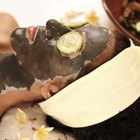
How to Make a Dead Sea Mud Mask

How to Use Sea Salt for Cracked Heels ...

How to Make a Soak for a Pedicure
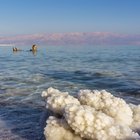
Deja Vu Skin Care Products

How to Wash Moccasins

How to Remove the Smell of Cologne From ...
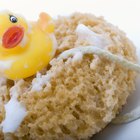
How to Disinfect a Loofah

Can You Remove Calluses With Lemon ...
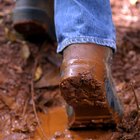
How to Clean Dry Mud From the Soles of ...
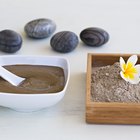
Rasul Spa Treatment
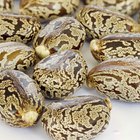
The Uses of Castor Oil for Healing

Can You Use Salt to Exfoliate Your Face?
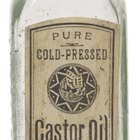
Castor Oil Home Remedies
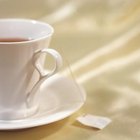
How to Make Calendula Tea

How to Make a Hot Toddy With Peppermint
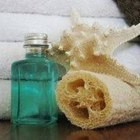
Side Effects of Mud Bath Therapy

How to Get the Stains Out of White ...

How to Clean Scuffed Up Rain Boots

Green Tea Remedy for Blackheads

How to Make Your Own Sea Salt ...
References
- Shape: The Best Spa Baths for Your Body
- The Complete Idiot's Guide to Massage; Joan Budilovsky, Eve Adamson
- The Complete Spa Book for Massage Therapists; Steve Capellini
- Milady’s Aesthetician Series: Aging Skin; Susanne Schmaling
- Dermascope: Mud Treatments
- The Telegraph: The Health Benefits of Moor Mud
Resources
Writer Bio
Melissa King began writing in 2001. She spent three years writing for her local newspaper, "The Colt," writing editorials, news stories, product reviews and entertainment pieces. She is also the owner and operator of Howbert Freelance Writing. King holds an Associate of Arts in communications from Tarrant County College.
Photo Credits
Olgaorly/iStock/Getty Images